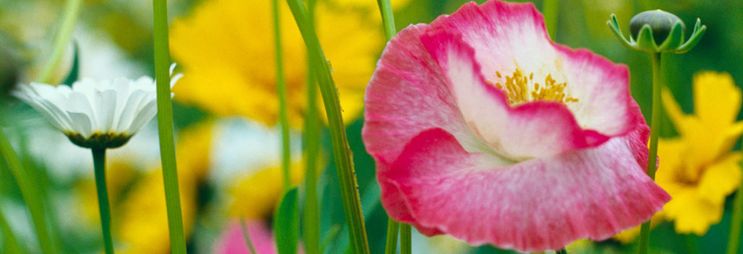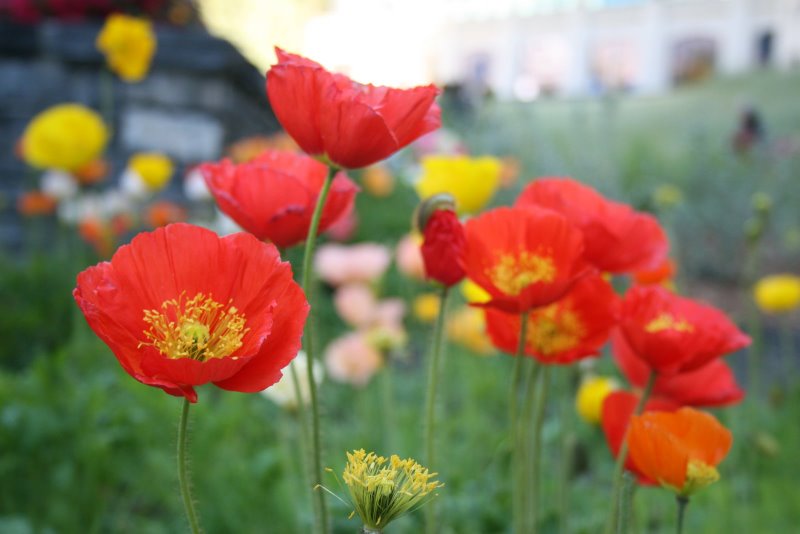by Ken Lain, the mountain gardener

Gardeners are some of the “tough customers” on our annual gift lists; it’s hard to know what they like/need. Here are a couple of suggestions:
- Wildflower seeds for the gardener in your life will trigger winter-long dreams of spring.
- A Watters gift card as a stocking stuffer is always well received. Now, if your wife, mom, or dad really wants a sweater for Christmas, get that sweater! But if folks you care about really love their gardens, a gift card from Watters makes perfect sense. Next spring, they can stop by and pick out precisely what they want or really need. We all know it’s not the same as the living plants they’ve been thinking about but, hey, it’s winter! Gardeners will understand.
Don’t have time to view the entire article, here are the highlights:
- The high country of Arizona has the perfect climate for wildflowers.
- ‘Arizona Mix’ is the seed of choice for wildflower purists.
- Wildflower seeds need cold and a freeze to grow most successfully.
- Seed should be spread no later than Valentine’s Day.
- Plant wildflower seed in an area that receives at least six hours of sunlight daily.
- Pour a bag of Watters Premium Mulch into a wheelbarrow and mix in the seed.
- 7-4-4 ‘All Purpose Plant Food’ spread over the entire seedbed.
- Gardeners love Watters Gift Cards as holiday gifts.
I usually wait until the first rains in January to write about wildflowers. However, this year our early winter weather has been absolutely perfect for spreading wildflower seed. With a few more good storms, wildflowers will be spectacular in spring!
The high country of Arizona has the perfect climate for wildflowers, but there are a few secrets to successful sowings.
First, there’s the seed mix. For the past few years, I’ve been blending my own Yavapai Wildflower mixes for the garden purist. These are genuinely wild seed best suited for high elevation gardens. Some of the blends are Parade of Poppies, the Arizona Wildflower Mix, Butterfly and Hummingbird blends, and for those in the forest surrounded by deer, my Deer Resistant Wildflower mix. These are the best blends of genuinely wild seeds collected throughout the Rocky Mountains for use in Yavapai County.
Basic requirements of wildflower seeds are their need for cold and a freeze, followed by the thaws of late winter and early spring. We have a few weekends to plant wildflowers, but we really should be finished by Valentine’s Day.
Four simple steps make a big difference between wildflower success and failure. Here are the specific planting techniques you can count on to guarantee breath-taking waves of wildflowers:

Step 1: Select and prepare the planting area. Wildflowers, except for those that are shade-loving, need a considerable amount of sunshine, so choose an area that receives at least six hours of sunlight daily during the growing season.
Planting in weed-free soil assures optimal results, so pull out any growth you don’t want to be mixed in with your wildflowers. Then rake the seedbed to loosen the top 1- 2 inches of soil. I find better growth occurs when natural plant food is scraped into the seedbed when loosening your topsoil, 7-4-4 ‘All Purpose Plant Food’ is well suited for this. It releases slowly throughout the spring and is precisely what’s needed during the germination period because slow feeding creates healthier roots and better flowers.
Step 2: Create your own hydro mulch. Some of the seeds in the mixes are so small you can barely tell if you’ve spread the seeds evenly across the soil. Pour a bag of Watters Premium Mulch into a wheelbarrow and mix in your favorite seed. Spread this seed-mulch blend over the prepared seedbed. This simple trick helps you see where the seed is placed, ensures good seed-to-soil contact, insulates the seed, and camouflages it from hungry birds.
Step 3: Keep the seedbed moist. If sufficient moisture is present, seeds will start to germinate from the end of February through April, as soon as soil temperatures warm. Wildflowers will require supplemental water if it doesn’t rain enough to keep the seedbed moist. A layer of snow over your seedbed is perfect for wildflowers. It maximizes germination without extra watering.
Step 4: Re-seed. In the fall, after the blooms are off and the seed heads are ready to drop, you can lend a hand in spreading seed for the following spring’s wildflowers. Just trim back the drying plants with a weed whacker. Besides pruning back the flowerbed, this will send a mixture of seeds flying throughout the garden for next season’s growth!
Until next week, I’ll be helping local gardeners with gift cards and wildflowers here at Watters Garden Center.
Ken Lain can be found throughout the week at Watters Garden Center, 1815 W. Iron Springs Rd in Prescott, or contacted through his web site at WattersGardenCenter.com or FB.com/WattersGardenCenter


Thank you for the article! I’m going to try a mixture of flower and grass seeds. Do you have a recommended ratio of seeds to mulch?
Thank you!
It doesn’t have to be scientific. Just put some mulch in a wheelbarrow and mix in the seed. the larger the area, the larger the amount of seed and mulch is needed.